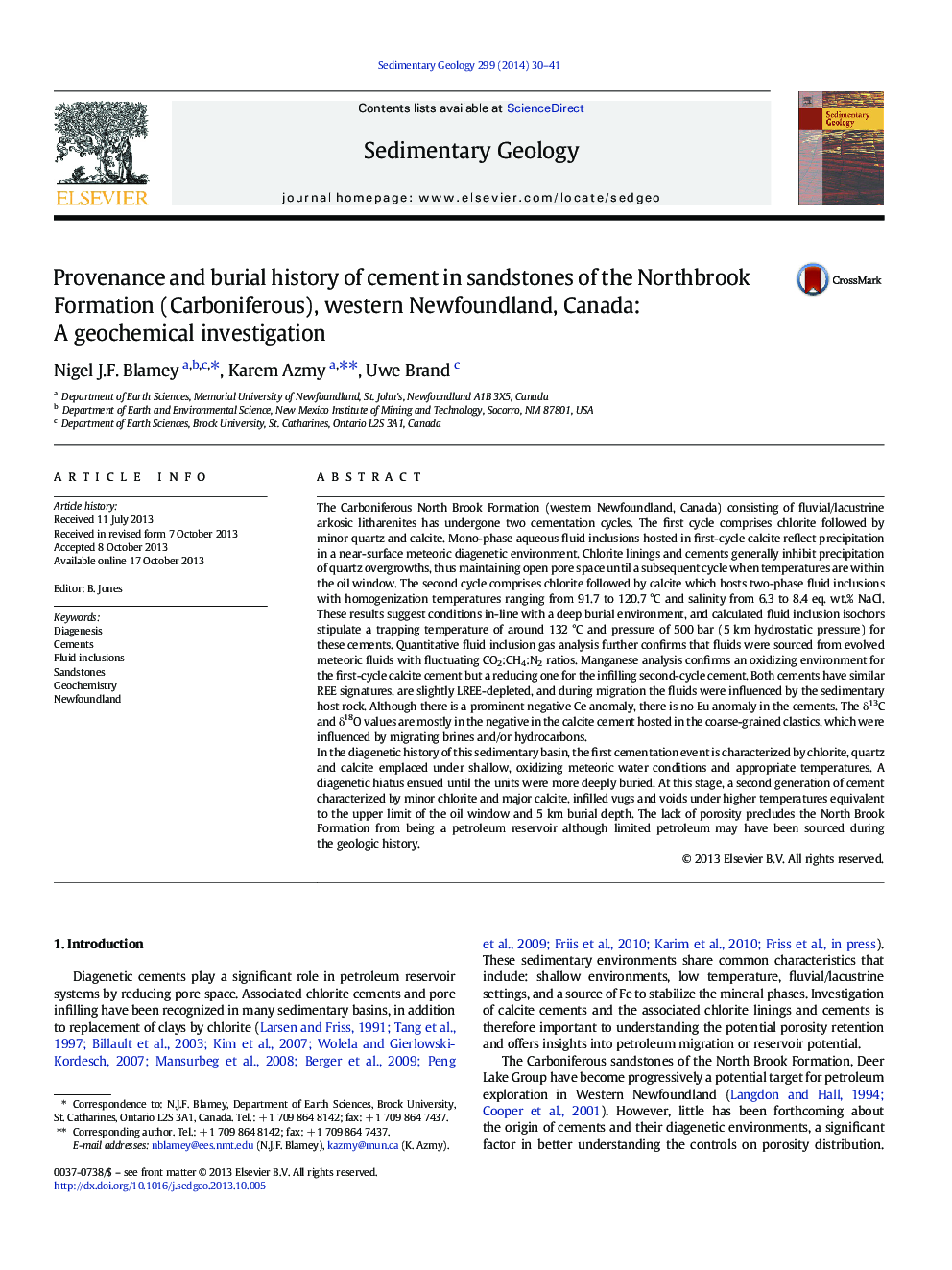| کد مقاله | کد نشریه | سال انتشار | مقاله انگلیسی | نسخه تمام متن |
|---|---|---|---|---|
| 4689489 | 1636064 | 2014 | 12 صفحه PDF | دانلود رایگان |

The Carboniferous North Brook Formation (western Newfoundland, Canada) consisting of fluvial/lacustrine arkosic litharenites has undergone two cementation cycles. The first cycle comprises chlorite followed by minor quartz and calcite. Mono-phase aqueous fluid inclusions hosted in first-cycle calcite reflect precipitation in a near-surface meteoric diagenetic environment. Chlorite linings and cements generally inhibit precipitation of quartz overgrowths, thus maintaining open pore space until a subsequent cycle when temperatures are within the oil window. The second cycle comprises chlorite followed by calcite which hosts two-phase fluid inclusions with homogenization temperatures ranging from 91.7 to 120.7 °C and salinity from 6.3 to 8.4 eq. wt.% NaCl. These results suggest conditions in-line with a deep burial environment, and calculated fluid inclusion isochors stipulate a trapping temperature of around 132 °C and pressure of 500 bar (5 km hydrostatic pressure) for these cements. Quantitative fluid inclusion gas analysis further confirms that fluids were sourced from evolved meteoric fluids with fluctuating CO2:CH4:N2 ratios. Manganese analysis confirms an oxidizing environment for the first-cycle calcite cement but a reducing one for the infilling second-cycle cement. Both cements have similar REE signatures, are slightly LREE-depleted, and during migration the fluids were influenced by the sedimentary host rock. Although there is a prominent negative Ce anomaly, there is no Eu anomaly in the cements. The δ13C and δ18O values are mostly in the negative in the calcite cement hosted in the coarse-grained clastics, which were influenced by migrating brines and/or hydrocarbons.In the diagenetic history of this sedimentary basin, the first cementation event is characterized by chlorite, quartz and calcite emplaced under shallow, oxidizing meteoric water conditions and appropriate temperatures. A diagenetic hiatus ensued until the units were more deeply buried. At this stage, a second generation of cement characterized by minor chlorite and major calcite, infilled vugs and voids under higher temperatures equivalent to the upper limit of the oil window and 5 km burial depth. The lack of porosity precludes the North Brook Formation from being a petroleum reservoir although limited petroleum may have been sourced during the geologic history.
Journal: Sedimentary Geology - Volume 299, 15 January 2014, Pages 30–41